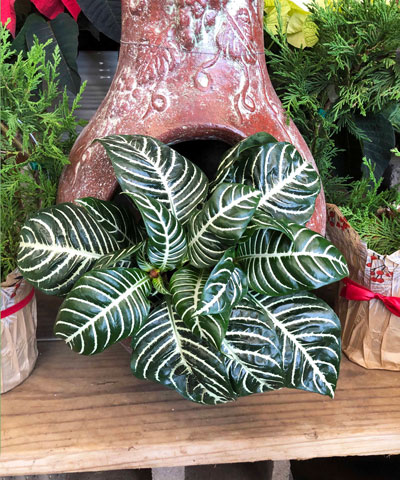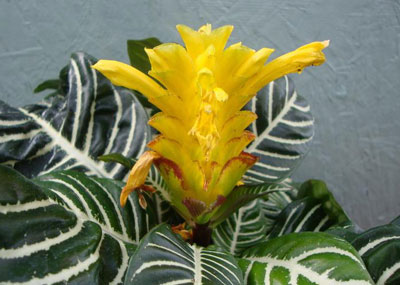Zebra Plant Growers Earn Their Stripes
I fell in love with zebra plants when I was a kid. Honestly, it’s hard to imagine any plant being any more spectacular, either of foliage or flower. But they’re not all that easy to grow. I’ve tried on several occasions, and they last for a fair while, but eventually they get leggy and I find that it’s easier just to buy a new one the next time that I feel that urge.
It was hard to pass this one up last weekend when we stopped by a local Calloways to pick up a ginkgo and some regular Burford hollies I’d had them put back for me. (Regular Burfords aren’t all that common, and I have just the right spot where I can use their taller growth.)
But back to the zebra plant nestled happily into its chiminea….

Here are the facts on this wondrous beauty:
• Botanical name is Aphelandra squarrosa. Surprisingly, that name has hung with it since I learned it in college 55 years ago. Botanists massage most names every decade or two.
• Native to eastern Brazil.
• Grows in the rainforest because it likes high humidity and generous rainfall.
• Shrubby, to 5 or 6 ft. tall, but as a potted houseplant much shorter.
• Needs warmth, preferably 70F.
• Bright indirect light. A shaded porch or patio would be ideal. Certainly not a dark room inside your house.

• Buy it in bloom if flowers are a big thing because it’s difficult to bring into flower as a houseplant. It usually blooms in the fall and flower spikes will last for a couple of months. Trim them off when finished to encourage side branching.
• Do not let this plant dry out. Remember those rainforest roots! Use lukewarm water to irrigate – not cold water right out of the tap.
• Don’t put it beside the fireplace. Keep it out of hot drafts. You’ll see references to misting its foliage, but that’s not really practical if you have forced air heating.
• Plants are propagated from stem cuttings. Or, as many of us do, they are propagated by buying new plants like the beautiful one I showed you from Calloways!
